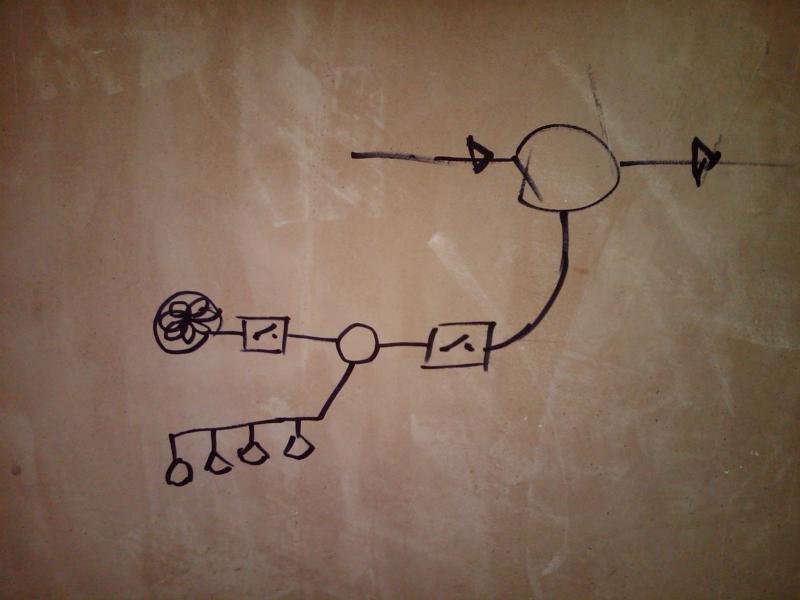Hi all,
Pre-cursor, I'll of course obtain necessary Part P certification and building regs prior to any work...
I'm planning on adding an extractor fan-light combo unit within my bathroom - I want it to turn on and off with the main bathroom pullcord light switch (powering the 12v low voltage spots that I am fitting) BUT I also want the ability to switch the fan/light on and off exclusively via my fan isolation switch outside the bathroom above the door.
Excuse my crude diagram drawn into the plastered wall but is this a fair representation of how the circuit would flow?
The upper circle is the main light circuit looping in/out of a junction box from which I will spur a 1.5mm cord to the bathroom pullcord switch - from which L2 will feed into another junction box, splitting to the 12v low voltage lights, the other to the fan isolation switch and onwards to the fan itself. The neutral/com and earth will also feed through respectively.
The fan/light unit does NOT have a timer and so doesn't require a permanent live.
Is this the best/right way to wire what I need? The junction boxes are 30amp 250v rated.
Many thanks!
Pre-cursor, I'll of course obtain necessary Part P certification and building regs prior to any work...
I'm planning on adding an extractor fan-light combo unit within my bathroom - I want it to turn on and off with the main bathroom pullcord light switch (powering the 12v low voltage spots that I am fitting) BUT I also want the ability to switch the fan/light on and off exclusively via my fan isolation switch outside the bathroom above the door.
Excuse my crude diagram drawn into the plastered wall but is this a fair representation of how the circuit would flow?
The upper circle is the main light circuit looping in/out of a junction box from which I will spur a 1.5mm cord to the bathroom pullcord switch - from which L2 will feed into another junction box, splitting to the 12v low voltage lights, the other to the fan isolation switch and onwards to the fan itself. The neutral/com and earth will also feed through respectively.
The fan/light unit does NOT have a timer and so doesn't require a permanent live.
Is this the best/right way to wire what I need? The junction boxes are 30amp 250v rated.
Many thanks!



